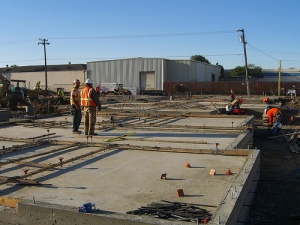Today, we have a guest post by Hayley Spencer, a freelance writer and attorney, on behalf of Martindale.com. She enjoys writing articles on contract law, law careers, and employment agreements.
Got a Job Offer? Now What? Engineers and Architects: Think Before You Sign!
Architects & Engineers are not immune from employment agreements. Those who go to work for a larger companies, especially, may be required to sign a contract of employment. This form may be standard and identical for each employee, or each employee may have a contract with the employer that applies solely to him or her. Alternatively, there may simply be an oral contract about the type of work the employee will perform, benefits to be provided, and bonuses which are applicable. If there is no oral or written form of agreement, the behavior of the professional parties involved can be identified as an implied employment contract. Some relationships may be that of a traditional employer and employee, while others may be set up as some type of an independent contract. Regardless of the specific details, it is always wise to have a qualified attorney review all such agreements before you sign them.

Why Do Engineers and Architects Need Employment Agreements?
Barring terms and policies that are actually illegal, anything and everything can be integrated into these types of agreement. Nonetheless, for engineers and architects, the law provides several safeguards regarding what can and cannot be negotiated upon as terms of employment. Furthermore, due to the gradual decrease in unemployment rates, employers have had to propose contracts for transitory workers loaded with language to safeguard them as much as possible. The sheer volume of potential variation, therefore, makes written contracts wise.
What Should You Consider Before Signing an Employment Agreement?
There are several particularly important regulations and policies of which you should be aware before signing any type of employment agreement.
First, is there a probationary period? Professionals do not just utilize probationary periods to analyze their new recruit’s fit. Setting a probationary time frame enables them to dismiss for purposes that would otherwise be inconsistent or inadequate.
Second, are oral offerings included in the contract? As with any relationship, optimistic forecasts of the future are common at the beginning of a work relationship. Nonetheless, your attorney can guide you through a list of solutions for engineers, architects and other specialists if employers’ pre-employment expressions were created negligently or if promises did not materialize.
What Common Aspects of an Employment Agreement are Generally Acceptable?
A professional confidentiality agreement is a part of a contract wherein the engineer or architect promises never to share any data regarding the details of how the employer’s enterprise is carried out, or of the employer’s confidential procedures, plans, solutions, information or equipment.
Similarly, a non-competition clause generally states that for a specified amount of time following the date the engineer or architect stops working as a part of the company, that person will not become employed by a competing firm or a firm focusing on an identical form of business.
An ownership of inventions clause applies to specialists who create or invent something as part of their work. By agreeing to this type of clause, the worker agrees that anything he or she creates while employed, or during a specified period of time following the contract termination, is treated as the creation or invention of the company and not that of the engineer or architect.
A no extra compensation clause specifies that if the worker becomes some type of executive or manager for the firm, he or she will not be subjected to extra compensation for accomplishing these duties.
Conclusion
Of course, this brief guide will be insufficient to help you navigate all the potential issues involved with these types of employment contracts. Their details can vary widely, so seek out a professional for assistance.
Thank you, Hayley, for your post. North Carolina employees should be aware that unless there is a specific employment contract, you are generally an “at will” employee. That means that you can be fired for any reason or no reason whatsoever, so long as it is not due to your being a member of a protected class (race, religion, sex, etc.). Also, covenants not to compete must be deemed reasonable to be enforceable.
Any questions for Hayley? Please post, below. And, if you haven’t already, please sign up to get email delivery of all posts directly to your mailbox, by going to the sign up form. At the same time, you’ll get the download link to my free white paper on the 7 Critical Mistakes that Design Professionals Make during Contract Negotiation and Execution that Sabotage their Projects & Invite Litigation.
Photo: (c) Aidan Jones via Creative Commons license.




